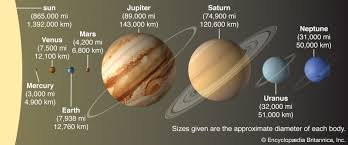The Solar System is a fascinating and intricate cosmic neighborhood that has captivated humanity for centuries. From the blazing sun at its center to the icy edges of the Kuiper Belt, every corner of this celestial expanse holds wonders waiting to be explored. In this post, we’ll take a journey through the Solar System, uncovering its mysteries and marvels.
The Sun: The Heart of the Solar System
At the center of the Solar System lies the Sun, a massive ball of hydrogen and helium undergoing nuclear fusion. It provides the energy that sustains life on Earth and governs the gravitational forces that hold the planets in orbit. The Sun’s immense power fuels everything from photosynthesis to the formation of weather patterns on our planet.
Key Facts:
Age: ~4.6 billion years
Surface Temperature: ~5,500°C (9,932°F)
Energy Output: ~3.8 x 10²⁶ watts
The Inner Planets: Rocky Worlds
The inner Solar System comprises four rocky planets: Mercury, Venus, Earth, and Mars. These terrestrial planets are smaller, denser, and lack extensive ring systems.
Mercury
Closest planet to the Sun
Surface resembles the Moon with craters and cliffs
Extreme temperature swings: -173°C at night to 427°C during the dayVenus
Similar in size to Earth but with a thick, toxic atmosphere
Hottest planet due to a runaway greenhouse effect
Surface pressure is 90 times that of EarthEarth
Our home and the only known planet with life
71% of the surface covered by water
Protected by a magnetic field and a breathable atmosphereMars
Known as the "Red Planet" due to iron oxide (rust) on its surface
Home to the largest volcano (Olympus Mons) and canyon (Valles Marineris) in the Solar System
A prime candidate for future human exploration
The Gas Giants: Titans of the Outer Solar System
Beyond the asteroid belt lie the gas giants: Jupiter and Saturn, followed by the ice giants: Uranus and Neptune. These massive planets are composed mainly of hydrogen, helium, and other gases.Jupiter
Largest planet in the Solar System
Hosts the Great Red Spot, a giant storm persisting for centuries
Has at least 79 moons, including the intriguing Europa with its subsurface oceanSaturn
Famous for its stunning ring system made of ice and rock
Second-largest planet
Enceladus, one of its moons, has geysers that eject water into spaceUranus
Rotates on its side, making its axis nearly horizontal
Pale blue color due to methane in the atmosphere
Known for its faint rings and 27 known moonsNeptune
The windiest planet in the Solar System
Deep blue hue from methane and other unknown compounds
Hosts the dynamic storm systems like the Great Dark Spot
The Dwarf Planets and Beyond
Beyond Neptune lies the Kuiper Belt, a region filled with icy bodies and dwarf planets like Pluto, Eris, and Haumea. These distant worlds are remnants of the early Solar System, offering clues about its formation.
Pluto
Once considered the ninth planet, now classified as a dwarf planet
Has a heart-shaped glacier made of nitrogen ice
Its largest moon, Charon, is almost half its size
The Future of Solar System Exploration
Humanity’s curiosity about the Solar System has driven remarkable achievements, from landing on the Moon to sending probes like Voyager 1 and 2 to interstellar space. Upcoming missions aim to explore Mars, return samples from asteroids, and probe the icy moons of Jupiter and Saturn for signs of life.
Conclusion
The Solar System is not just a collection of planets and celestial bodies; it’s a dynamic, interconnected system that continues to surprise and inspire us. Whether through the lenses of powerful telescopes or the data sent back by robotic explorers, every discovery deepens our understanding of this vast cosmic neighborhood.
What fascinates you most about the Solar System? Share your thoughts in the comments below!
If you enjoyed this exploration, feel free to upvote, comment, and share. Let’s keep the cosmic conversation alive!
